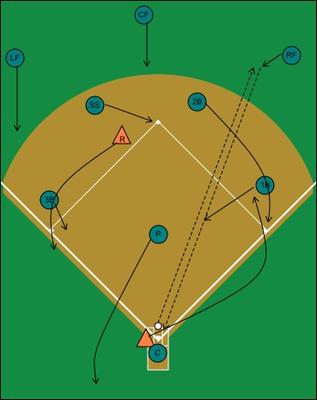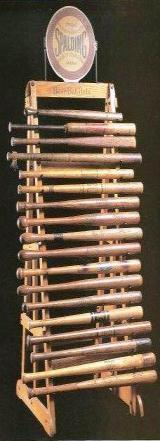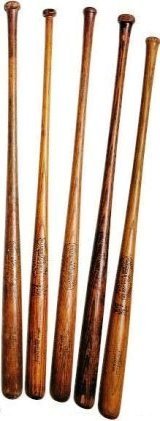If a right fielder fields the ball, does he have a designated cut off man? Who should he throw the ball to?
by Sandy
(Mansfield, TX)

Sandy asked: My son was playing right field.
He fielded a ball that was hit, and that player was advancing to first base.
Another player on base was advancing from second to third base.
Who should my son throw the ball to? He threw it to first but; his coaches told him that he was wrong and should have thrown it to second base.
The first baseman and pitcher had run to home to help cover the other player that was advancing.
My son threw it to first base instinctively because the runner was only half way. It would have been an out if the first baseman had been there.
I just want to clear this up for my son. I am not going to try to correct his coaches. His coaches were pretty hard on him, stating that he caused an error and he feels bad about it.
Thanks.
Rick answered: Sandy, thank you for your question!
Yes, there is a designated location for every throw to go to, as well as a place for every defensive player to be moving towards.
Where that throw is headed is determined by the location of base runners, where the ball is hit, what type of hit is it, ie...fly ball, line drive, ground ball, the score, inning and number of outs.
All of those factors get decided by each fielder, before every pitch is thrown. It is possible for the situation to change, in some instances, pitch by pitch.
While that may all seem complicated, in reality it is easily managed by players and the standard rule for each situation stands in the majority of plays.
As you look at the diagram at the top, it is the basic for the situation your son recently encountered.
The rightfielder, in advance, is thinking that on a base hit to right field, he is fielding the ball, and throwing the ball to home plate, in an attempt to get the runner going from second base to home.
The first baseman comes into the infield grass, set himself up as the cutoff man for the right fielder. The right fielder is looking to throw the ball through the first baseman's head, on a line to the catcher at home plate.
The first baseman is positioned where he is so that, if the throw is offline, or it is already too late to make the out at home, then the first baseman can cut the ball off.
He cuts it off so that the batter/runner does not advance to second base, and thus into scoring position. He may also cut it off to relay it to the catcher if needed.
The pitcher should be going all the way to the backstop, behind the catcher, to be there if the ball gets by the catcher and minimize the number of bases the batter/runner could end up with.
The second baseman is headed to first base in the event the batter/runner makes a big turn and the first baseman is able to cut the throw off, and throw to the second baseman to get that out.
The shortstop goes to second base in case the play is extended to second.
The center fielder is headed towards second base also, as a backup for that possible extended play.
The left fielder is headed to back up third base, in the event the runner from second is still in play there at some point.
The catcher stays at home, lines the first baseman up between home plate and the right fielder, and makes the determination as to whether the throw comes to the plate, gets cutoff and held by the first baseman, or gets cutoff and thrown to second base or first base for the play there.
Some of the game conditions that may have come into play in your situation:
- There was no chance from the start of getting the runner from second base, so the outfielder adjusts and throws to second base, to keep the batter/runner out of scoring position.
- Defensive team is so far ahead that they are not concerned about giving up a run, so they go directly to second base.
Ultimately, the base set up is the standard, the outfielder comes up throwing through the first baseman, the cutoff decisions are left up to the catcher, or the first baseman, who can see it all in front of him.
As an outfielder, it is seldom a good idea to make that throw to first base in an attempt to get the batter/runner. If everyone is headed where they need to be defensively, there will be no one at first base to receive the throw from the right fielder. The second baseman will be there in time to receive a throwback from the first baseman, if that opportunity appears.
The links below will take you to additional pages on the site which pertain to cutoff situations.
There are overviews of single cuts, as well as double cuts, and the subsequent diagrams for each.
1.
Single Cutoffs2.
Single Cutoff Diagrams3.
Double Cutoff4.
Double Cutoff DiagramsIn the game of baseball, defensive and offensive situations are the core of team development. It takes time to cover it all; but it is time well spent.
Looking at diagrams will help; but players need to see it come to life in practice, so that they are not experiencing situations for the first time, in game competition.
If, as a coach I was only allowed to use one drill, it would be
defensive drills off a fungo, the best comprehensive defensive and offensive team drill ever devised.
Knowledge of where to go and what to do provides players with confidence in their ability to handle anything that comes their way.
Good luck to you and your son as you move forward. You are building great family, lifetime memories.
Yours in baseball,
Rick



